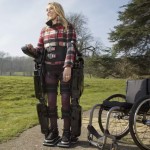 Robotic technology hasn’t swept all before it, as perhaps some of the more breathless predictions of a few years ago suggested it might, but it is nonetheless slowly become more widely adopted. Exoskeletons are an example of a technology that has become increasingly potent, but new research from the Norwegian University of Science and Technology explores whether the technology is designed for the average person.
Robotic technology hasn’t swept all before it, as perhaps some of the more breathless predictions of a few years ago suggested it might, but it is nonetheless slowly become more widely adopted. Exoskeletons are an example of a technology that has become increasingly potent, but new research from the Norwegian University of Science and Technology explores whether the technology is designed for the average person.
The researchers highlight how much of the exoskeleton technology on the market today is designed for western adults of average height and weight, with a common maximum height of 190cm and weight limit of 100kg. This fails to account for the huge variety in sizes found around the world.
“We want to get exoskeleton designers to think more inclusively and develop robot technology that works for more people,” the researchers say. “This is a glimpse into a future that we want to make inclusive. That includes adapting health technology that can contribute to a better life for the user to be more widely accessible.”
Technology for all?
The researchers looked at the exoskeletons produced by Indego, Ekso Bionics, and Cyberdyne, who are three of the biggest manufacturers on the market. They highlight that traditionally, robot technology was seen as a male sphere, but worry that this bias still exists today, despite users being far broader than was previously the case.
“Exoskeleton users come in many different shapes, sizes and genders. However, designers tend to resort to the one-size-fits-all principle. From an investment point of view, this may be cost effective, but it does not do justice to end users who risk being excluded from accessing the technology,” they explain.
For the technology to become more accessible, the researchers propose a variety of tools for both manufacturers and designers to use to help make their work more accessible.
For instance, they urge them to make sure exoskeletons are accessible for both underweight and overweight people, and to be aware of the physical differences between men and women. Similarly, exoskeletons should be easy to don, even for those who lack upper body strength, with greater support for blind users.
These developments would be greatly assisted by the manufacturers having a more diverse workforce that gave them access to a broader range of perspectives, both from a physical but also capability perspective.
As the technology evolves, it will become used by a wider range of people, so it’s vital that the sector adapts to its new userbase rather than forcing users to struggle to adapt to the technology.